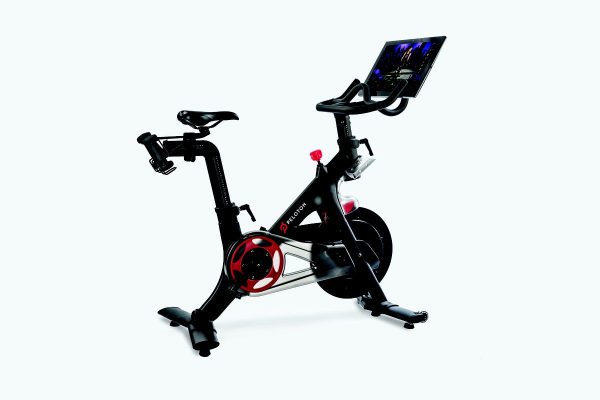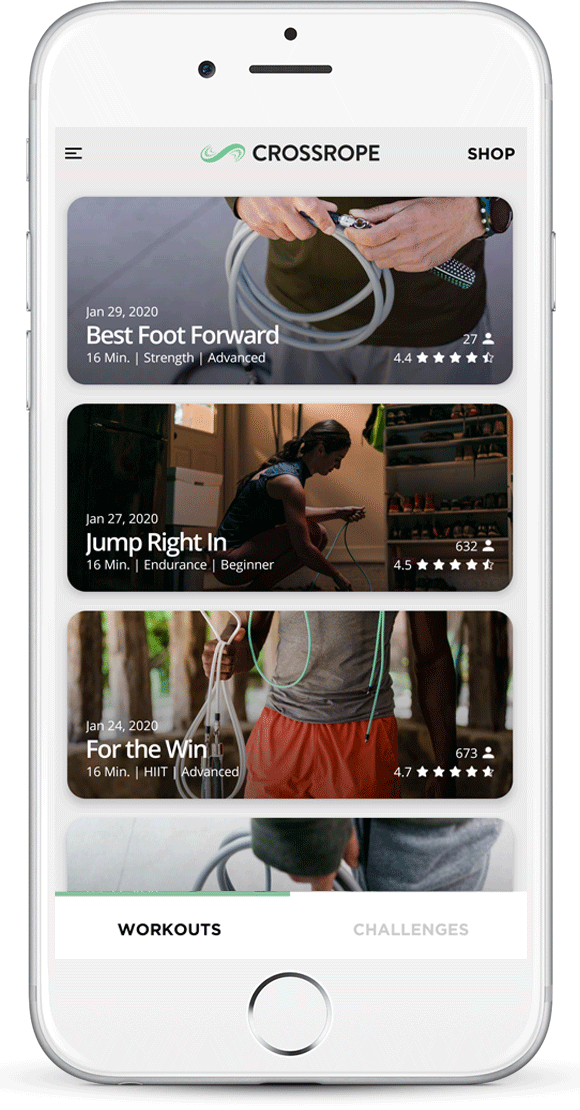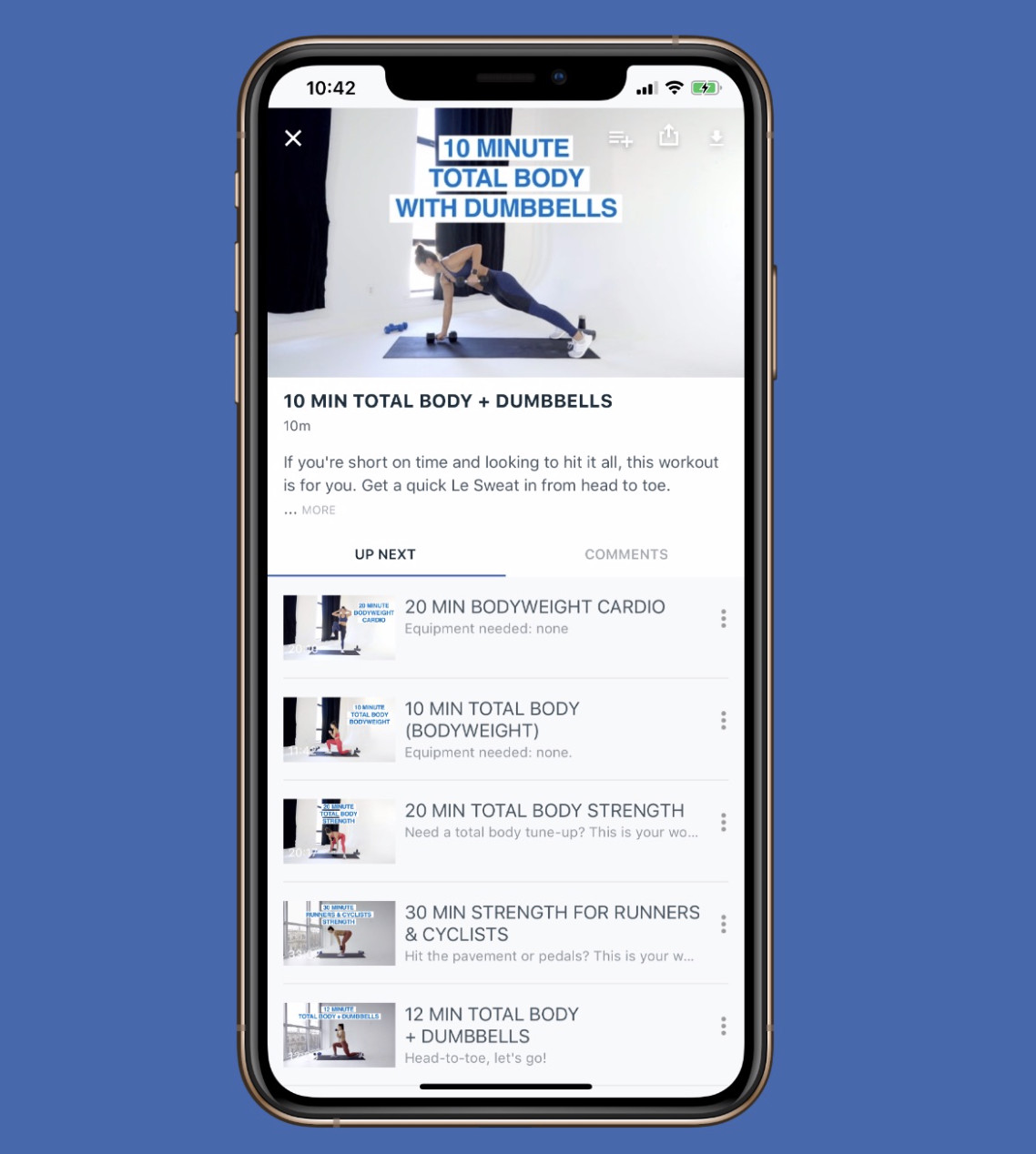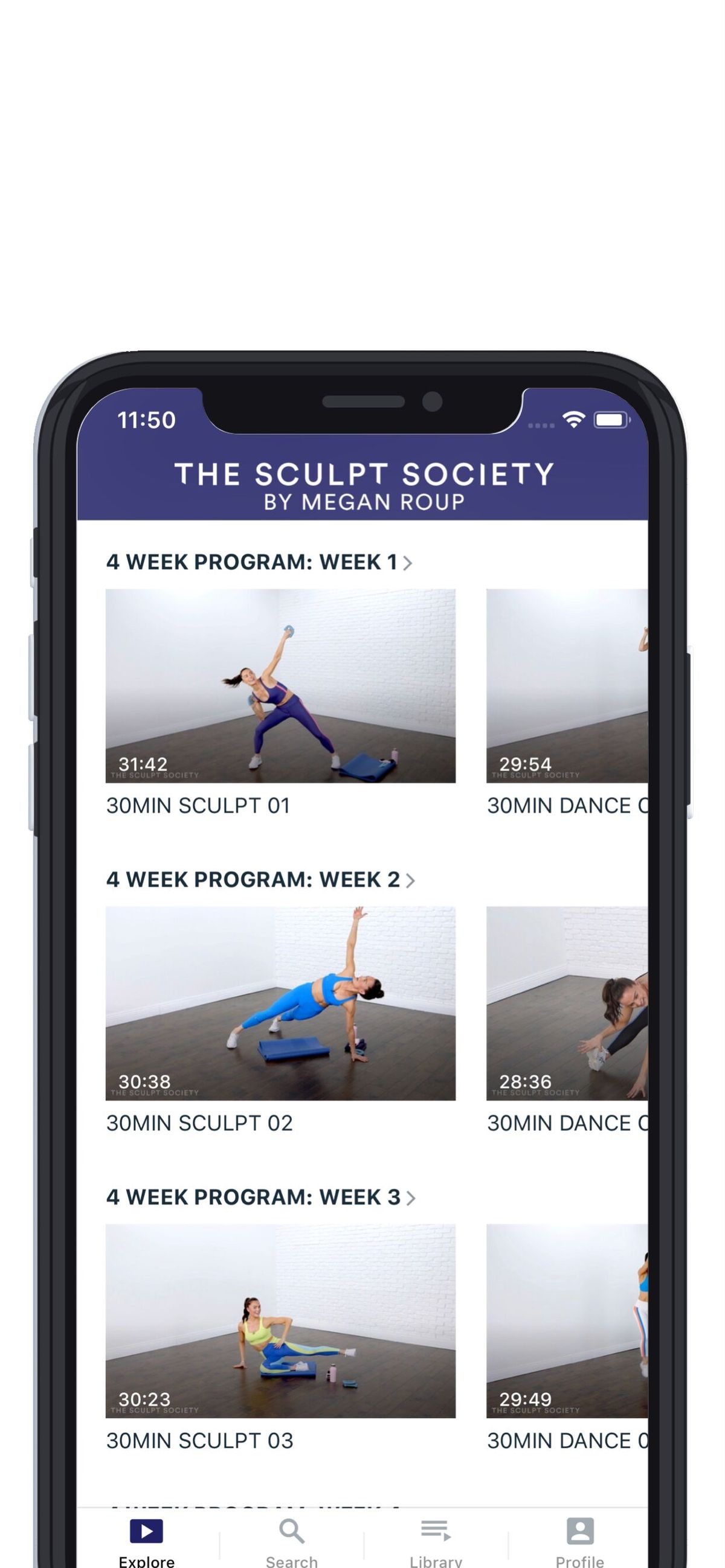It’s been a little over two weeks since New York closed all gyms and fitness studios to curb the spread of the coronavirus. As more states followed suit, more gym-goers’ and fitness fans’ lives were disrupted in the process.
Granted, in the grand scheme of this pandemic, fretting over closed gyms and group fitness studios pale in comparison to the dire situation at hand. But for many people, fitness is a crucial part of life, for mental as well as physical health.
For me, physical activity is therapy, leisure, an escape, a hobby, and a stress reliever, all wrapped into one. Even more difficult is living in New York, where space is at a premium and a fancy home gym is an absurd fantasy for many except the very wealthy.
In response to the shutdown and to capture clients stuck at home, the boutique fitness movement, especially group fitness, now lives online. Some, like Peloton, have already built entire business models and empires online. Others, like Barry’s Bootcamp, have started airing their workouts on Instagram or other platforms to reach their customers.
I’ve tried some of these online options since my workout studios closed last month. Here are eight online options. (One note: I tried to focus on apps that are cardio-focused and don’t require a full free weight or heavy dumbbell setup, since that equipment is now harder to find.)
Peloton

Cost: $2,245 for the Peloton bike. $39 per month for the all-access Peloton app. Peloton also has a $12.99 digital app that grants you access to classes but doesn’t store metrics. A 90-day free trial is available.
Equipment needed: The Peloton bike for the full Peloton cycling experience. But if you have your own bike and lifting or running equipment, you can use the digital app for workouts.
Back around Christmastime, I joined the chorus of people poking fun at Peloton’s holiday advertisement, in which a husband gifts his beautiful wife a $2,000-plus exercise bike. But now, having spent weeks working from home and self-isolating with no access to cardio machines, I wish I had a husband who would be that thoughtful.
The Peloton bike is smooth, and its comfortable ride is never compromised, even as you can build a lot of resistance. On the bike is a tablet that allows you to watch a live class via the included Peloton app led by an instructor. Peloton’s instructors are still filming classes and broadcasting live, but the company has shut down its in-person studios to the public.
All the instructors are generally considered to be pretty good and ensure a hard workout, though finding one whose playlist you like and whose personality you click with is key, as is the case with any fitness class. And the competitiveness of the class’s “leaderboard” — which shows how much power you’re exerting against resistance and how well you’re keeping pace — is a great motivator if you’re the type who likes being pushed.
While the company is known for its signature bike, Peloton’s app also has yoga, treadmill, and strength classes. And you don’t need to buy the bike to use the company’s workout app.
If I had $2,000-plus to spare, I’d probably get a Peloton bike, and the longer social distancing goes on, the more it seems like one of the best investments for the fit-minded individual — who has cash to burn, that is.
Mirror
Cost: $1,495 for the Mirror (heart rate monitor included). The app is $39 per month for unlimited classes and can support up to six unique users.
Equipment needed: The Mirror.
Mirror is like Peloton, but for an off-the-bike workout. It’s a sleek, expensive device that is installed on a wall in your home and projects a real-life trainer, who’ll conduct a live class, in the exercise mirror equipment. You’re working out in your home and following along with a trainer that lives in your mirror.
There’s definitely a Black Mirror aspect to it, because Mirror truly feels like a workout from the future. It offers a range of classes, from boxing to yoga, but the competitive cardio classes — which read your heart rate and then award points based on how high you keep it and how intensely you work out — are probably what set Mirror apart.
You can lift weights at home (if you were able to order them before they were sold out online everywhere), and you can run outside if you feel safe enough to do so. But being able to do a regimented, intense cardio class in your home during these times is a rarity. All the other class options just add to Mirror’s experience.
Crossrope
Cost: The weighted jump ropes range from $99 to $139. The Crossrope app is free.
Equipment needed: A jump rope.
Running may be both one of the most accessible and most therapeutic forms of cardio right now. Provided that they’re keep social distancing in mind, Americans are still allowed to get outside and away from their quarantine bases for a few moments. Parks and wide, empty sidewalks are ideal places to get in a long run, and all you need is a pair of sneakers and maybe some good music.
A personal problem, however, is that I get very bored of running, and it’s never been something I’ve gotten into as a result. And given that I don’t have the disposable income for a Peloton or a Mirror, those other types of cardio options are out the door for me.

Enter Crossrope, a weighted jump rope workout. The jump ropes come in two different styles: the thinner “Get Lean” ropes ($99) and heavier “Get Strong” ropes with weighted handles ($139). While you can start just jumping rope until your legs tucker out, the Crossrope equipment comes with an app that gives you timed exercises including bodyweight drills and short rest periods to give you a full workout. I was really surprised at how much the two-pound “Get Strong” ropes kicked my butt — around two minutes or so of jumping rope and working out with them, and I felt that good kind of burn that I was getting in my workouts pre-quarantine.
Barry’s on Instagram Live
Cost: Free
Equipment needed: Barry’s offers both a bodyweight-only class and a class that uses resistance bands, available for purchase through the studio.
Before the self-distancing measures were put into place, I was going to Barry’s four to six times per week, and I’ve missed it a lot. Since the shutdown, individual Barry’s instructors have been posting workouts on their social media, which, if you have a specific instructor you like or connect with, is really nice. Overall, Barry’s has leaned into its Instagram and has transitioned to offering two kinds of free classes on Instagram Live per day.
One of the currently scheduled classes is usually bodyweight-based (squats, lunges, pushups, planks, tricep dips), while the other class of the day incorporates a “fit kit” — a handled resistance band, a mini band that loops around your thighs and provides resistance in leg exercises, and a “booty band,” a resistance band that wraps around your ankles and isolates your butt in exercises. Barry’s is selling these kits online.
The 20- or 30-minute workouts will make you break a sweat, and the instructors keep the classes lively, since they’re creating playlists and working out with you in real time. It’s not quite like the true Barry’s in-studio experience. But even if the Instagram Live classes aren’t your thing, the resistance band and booty band are useful, versatile pieces to work out with if you don’t already have them in your home.
Many other boutique studios and fitness gyms offer similar virtual live classes for free, so check out your favorite to see if it has one available.
Le Sweat
Cost: $12.99 per month with a seven-day free trial
Equipment needed: Le Sweat offers both bodyweight exercises and routines with dumbbells.

After seven and a half years with SoulCycle, master instructor Charlee Atkins decided to do her own thing. That’s now her fitness company Le Sweat and her monthly subscription-based fitness app, Le Sweat TV. Like her teaching style at Soul (I rode with Atkins for four years or so), her workouts — which range from seven-minute abs to 25-minute strength-focused drills — are well-structured and designed to make your body feel good while also making you feel strong. She’s working out with you at the same time, and it’s motivating to see a coach actually do the moves instead of just pumping you up. (I’ve been known to roll my eyes at instructors who don’t understand how hard their classes are.) Atkins also offers guided stretching and posture exercises, which are good warmups or cool-downs — I like to do some when I get out of bed.
WodWell’s Bodyweight Section
Cost: Free
Equipment needed: None
I am not a fan of CrossFit; I tried it a couple of times, and it just wasn’t for me. I’ve also seen videos of kipping pullups, and as someone who has a bad shoulder, that’s also not for me. Yet WodWell (“wod” stands for “workout of the day”), a site serving CrossFit coaches and CrossFitters, is one of the best places I’ve found for free bodyweight routines and exercises online. If you sort the site by “no equipment,” you’ll find that WodWell has a variety of challenging workouts and routines that you could do in your living room or hallway. Some of the workouts have advanced finishing moves (handstand pushups) or a timed aspect to them, but I usually sub in something more shoulder-friendly (regular pushups) and don’t worry about the time aspect as much as finishing the workout itself.
The Sculpt Society
Cost: $19.99 per month with a 14-day free trial
Equipment needed: The Sculpt Society sells gliders, bands, and an exercise ball, but exercises can be modified, and household objects (like towels as gliders) can be used.

Sculpt Society’s claim to fame is that Victoria’s Secret models often use it to stay in shape.
Designed by trainer Megan Roup, the Sculpt Society (available through a subscription-based app) isolates your muscles as you’re doing dance-inspired moves, light weights, and high reps. The moves look less graceful when I do them, but the point is to keep going until you experience the frustration and hilarity in finding that a move as simple as sliding your foot while holding a lunge can be so uncomfortable. While it isn’t going to turn you into a VS Angel overnight, Sculpt Society does give you what I can only describe as post-barre or post-Pilates quiver in your muscles. It’s the most acute combination of burn and fatigue in muscles you didn’t know you had, available in your home and when you want it.
Yoga to the People
Cost: Free — Yoga to the People is a donation-based yoga community.
Equipment needed: A Yoga Mat and towel are recommended.
As a non-flexible person, yoga is one of the things I prefer to do at home, where I can make peace with my horrendous triangle pose in the privacy of my apartment. The problem is that while I’m good at doing a few poses and stretches (thank god for pigeon), I have no concept of how to put together a good flow. Luckily, Yoga to the People, a famously “pay what you can” organization with studios nationwide, has taken its popular set of classes online.
Yoga to the People offers two classes per day via Zoom, and three on Wednesdays. For more advanced students, there’s an additional Master Class available on Wednesdays too. Zoom thankfully also allows you to mute and turn off your camera, so no one will gawk at you falling out of Warrior 3.
The fitness industry has been hit hard too
A thing to keep in mind during all this is that the coronavirus pandemic has led to an estimated 10 million Americans filing for unemployment in the past two weeks. No industry is untouched, including the fitness industry.
On March 19, the founder of Solidcore, a workout that gained cult status because of a Michelle Obama endorsement, emailed its clients that it laid off 98 percent of its staff. According to a memo sent to Vox, SoulCycle announced in a company call on March 30 that it would start contacting employees regarding layoffs and placing some on a temporary furlough. And Flywheel, an indoor cycling studio à la SoulCycle, also reportedly laid off 98 percent of its workforce this past week.
If you’re friends with an instructor/trainer or were a regular at classes and want to help support them, it might be a good time to check in. Chances are, some might be offering virtual coaching or starting workout routines online. Working out through an app on your phone or on your television isn’t quite the same as getting to the gym, but if you can motivate yourself to start, these and other options can provide a sweat, burn, or stress release that many people are missing.

